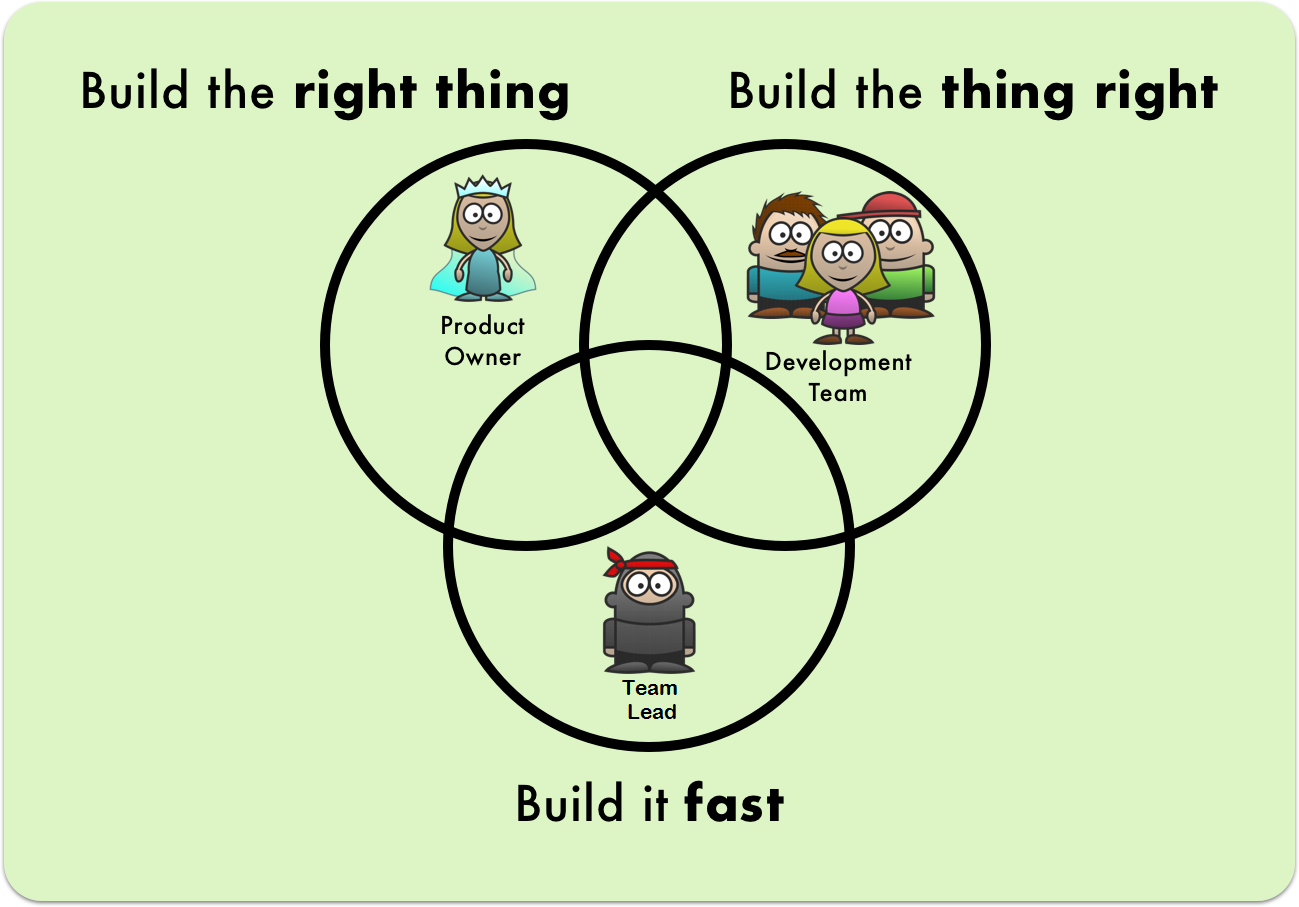Team Lead vs. scrum master
These days, many companies are trying to implement Scrum and get on the path of adopting its values. But some teams, especially in large established companies, are still trying to combine some familiar things with this innovation. One such practice is having team leaders. Is it reasonable or not? Let’s try to give a substantiated answer to this question.

How a team lead distributes tasks
In their work, the scrum masters sometimes encountered a workflow in which several scrum teams had their own leaders. And these specialists were very competent. Professionally, these team leads really were objectively the strongest developers with deep expertise in the digital product. But the role of team leaders was assigned to them by the top management, and the rest of the team had to report to them.
What did the reamleads do?
Almost every day they had to distribute tasks among the developers. That is, in the morning the manager was expecting a crowd of specialists waiting for new assignments.
As a result, the team lead spent a long time handing out tasks or changing them, trying to organize the work as efficiently as possible. Only toward lunchtime did the team leader leave to program something. In turn, the developer, having completed the task, hurried back to the team lead to check if he/she had done the work correctly. And if it was wrong, the specialist would go back and redo it.

The main drawback of this process is obvious – low efficiency. Why does this happen? The reason is low interest in the result. The developer receives a task, completes it, brings it to the team leader. The pro says, “Wrong, try again”. Such leaps can go on for a very long time, burning up the customer’s time and money.
Thus, the team leader acts as the bottleneck of the team. After all, others often have to wait for him/her to make a decision, set a task, or just let them do their work.
This example hides an interesting psychological phenomenon – low labor energy. People themselves do not take up tasks. At the same time they are assigned, handed out, subconsciously perceived as orders. And our brain is set up so that only independent decisions we tend to perform with double energy and bring them to an end by all means. According to research, we have 40% more labor energy when we decide to complete a task on our own. And that makes a difference!
So how do you put this knowledge into practice? According to the rules of Scrum, the principle of self-selection of tasks is fully respected if you play by the rules.

How Team lead solves the problem of mutual aid
Experts from Andersen say there are no generic specialists who can accomplish all tasks. Sometimes it happens that one team member has to do multiple work. But when an employee asks his/her colleagues for help, it turns out that they also have many tasks to complete before the deadline. There is no mutual assistance, all such situations have to be solved by the team lead, and the rest of the team members are completely uninvolved in the process, expecting everything to be done for them.
I am sure that you have encountered similar situations. In this regard, I would like to point out how difficult it is for a team lead to take a leave of absence. When everything depends on one person who alone leads a team, makes decisions and solves problems, you can find yourself in a situation where the entire work process is tied up with him/her. As a consequence, the team leader becomes a bottleneck.

Team lead vs. scrum master
The goal of the scrum master is to transfer all responsibility for decision-making to the team. What does this mean? The team makes the decisions, and the scrum master only creates the necessary conditions and helps people come to an agreement. What does this look like in practice? Instead of assigning specific task performers, the scrum master brings everyone together to help them find solutions.

So, the Agile team makes its own decisions, and the product owner is responsible for the requirements. It seems that all is well, everyone works according to the scrum. In this case, it is completely unclear what the scrum master does. But there is an answer. The main task of the scrum master is to teach people to agree, to help them look at the same things in the same way.

Great facilitator
Facilitate means to promote, alleviate, simplify. That is, the facilitator eases communication within the team. They usually work with rather soft techniques, asking clarifying questions, bringing the team to an understanding of the problem from a broader perspective.
Is it always easy? Not at all. Often the behavior of an inexperienced facilitator boils down to one of the following patterns:
- The Smartest (scrum master comes to the team with a ready solution, colorfully presents it, tells what to do and how to do it, and already has ready answers to all questions);
- The Quietly (no one notices the scrum master at meetings, no one listens to him/her);
- The Generous (scrum master allows the team to move in any chosen direction and make any decisions).
The real role of the scrum master is to prevent the team from making a knowingly wrong decision and to steer the team’s reasoning in a constructive direction by asking the right questions. This specialist has no actual right to give orders, which are often given by the team leader. Rather, his/her job is to teach others how to reason, draw their own conclusions, and see the problem in general.

It is also important for the scrum master to be invisible in any situation, not to take any statements to heart and remain impassioned.
Conclusion
Obviously, the scrum master is not always kind and gentle. One of his/her key roles is to remove obstacles in the team’s path. The scrum master clears up the piles of problems and difficulties that others face so that they can move forward in a coherent and clear manner. To do this, the specialist often has to carve out resources, negotiate, advocate for team members and find compromises.
It is important to understand that the work of the scrum master not only affects the team, but also the organization and the owner of the product. Of course, this is a strong advantage and a large sphere of influence. Given all the responsibility, the scrum master must use special techniques and methods and, in some cases, be certified.
To summarize, I can say that having a team leader is a good solution in some cases. But in such teams it is usually impossible to establish a real Scrum process, to grow self-organized specialists.
